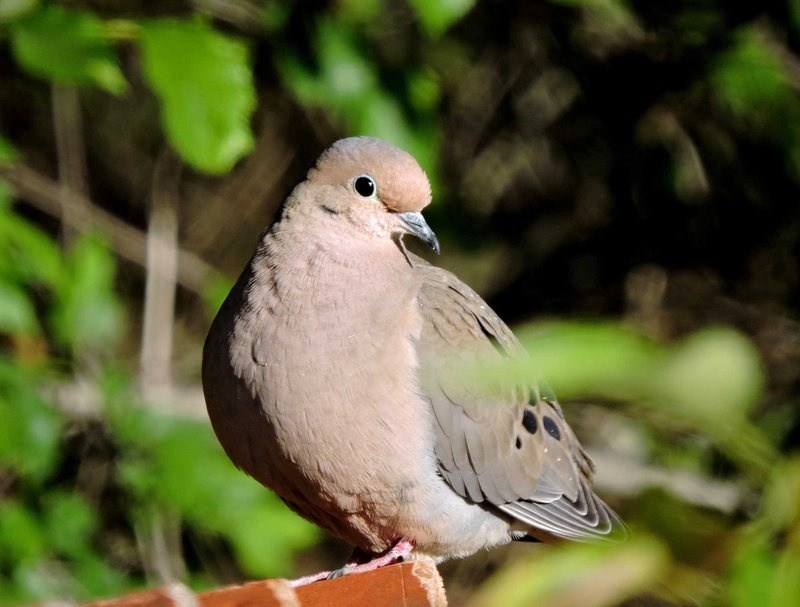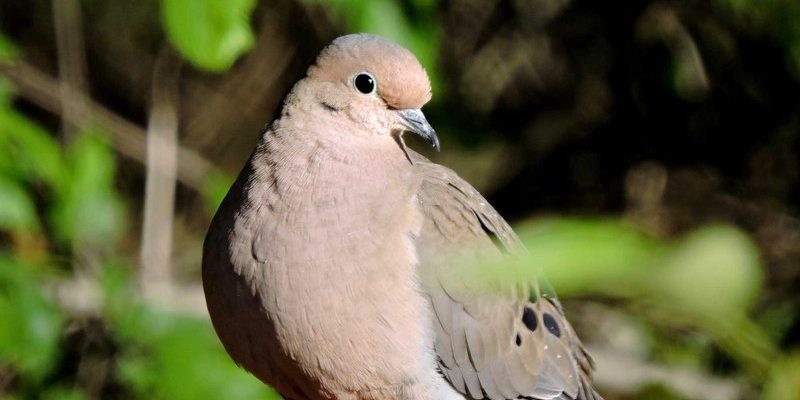
Imagine wandering through a lush park or a bustling city, and you hear that soft, soothing cooing sound. That’s probably the mourning dove calling out to a mate or establishing its territory. Just like humans adapt to new neighborhoods by learning the best routes to work or fun places to hang out, mourning doves have their own clever ways of adjusting to their surroundings. From their feeding habits to nesting preferences, each adaptation plays a critical role in their survival.
Let’s dive deeper into the fascinating world of mourning doves and discover how these birds make the most out of their environment.
Feeding Habits: A Flexible Diet
Mourning doves are not picky eaters, which is a huge advantage when it comes to finding food. They primarily feed on seeds from grasses, weeds, and agricultural crops. Here’s the thing—being a seed lover means they can thrive in various environments, from urban settings to rural farmlands. This flexibility allows them to adapt to their surroundings easily because food sources are all around them.
You might wonder how they manage to find the seeds in the first place. Mourning doves have sharp eyesight, which helps them spot seeds on the ground. They often forage alone or in small flocks, pecking at the ground and communicating with soft coos to alert others of food sources. Interestingly, their ability to adapt their feeding habits means they can also digest a wide variety of seeds, allowing them to survive even when certain food sources become scarce.
During the winter months, when seeds can be harder to find, mourning doves can adapt their diets by eating fruits and berries. This change is crucial for their survival, especially in colder climates where their primary food sources may be buried under snow.
Nesting: Choosing Safe Spaces
When it comes to raising a family, mourning doves are known for their clever nesting strategies. They typically build nests in trees, shrubs, or even on ledges in buildings. You might think these birds would prefer secluded spots, but they often nest in more visible areas. This choice is strategic; it allows them to keep an eye on potential predators.
Mourning doves often choose sites that are close to food sources, so parents don’t have to venture far to find nourishment for their chicks. Their nests are usually made from twigs, grasses, and other materials they can find nearby. In urban environments, they can even get creative and utilize bits of human-made materials.
Their quick adaptability means they can establish new nests swiftly if one is disturbed, allowing them to continue their breeding cycle without significant interruptions. And just like that, they demonstrate their resilience.
Migration: Seasonal Adjustments
Mourning doves are migratory birds, meaning they relocate seasonally to find the best conditions for feeding and breeding. During colder months, they often move south to warmer climates where food is more abundant. This migration is a classic example of their adaptability; rather than sticking to one place and risking starvation, they pursue opportunities where survival is more feasible.
In spring, they return to their breeding grounds, often arriving at the same sites year after year. This consistency in choosing nesting areas allows them to take advantage of the best resources and continue thriving in those environments. You could say they have a built-in GPS for their annual journey!
The migration patterns of mourning doves are not just instinctual; they may also be influenced by environmental changes. For instance, a sudden cold snap or drought could prompt them to adjust their migration timing or destination. This responsiveness helps them cope with the unpredictability of weather and food availability.
Communication: Vocalization and Body Language
Communication plays an essential role in the life of mourning doves. They use a variety of coos, calls, and body postures to signal to each other. Their soft cooing is one of their most recognizable features, but did you know that they also communicate through body language?
During courtship, males will puff up their chests and perform a series of intricate movements to attract females. This display is vital for ensuring successful mating and, ultimately, the continuation of their species. If you’ve ever watched them, you might have noticed their calm demeanor even when they’re bustling about. Mourning doves are masters of staying cool under pressure, which helps them avoid alarming potential predators.
In addition, they use their calls to warn each other of danger. When one dove spots a predator, they’ll coo loudly to alert their companions. This communal alert system enhances their adaptability, allowing the flock to react quickly and escape threats.
Habitat Choices: Urban vs. Rural Living
Mourning doves are incredibly adaptable when it comes to habitats. They thrive in a variety of environments, including urban, suburban, and rural areas. This ability to live in diverse settings is one of their greatest strengths. You might see them perched on telephone wires in a busy city or strolling through a quiet park.
In urban areas, mourning doves take advantage of the abundant food sources provided by backyard bird feeders and spilled seeds from cafeterias and parks. They often nest on balconies, ledges, or in trees in the rapidly changing landscape of cities. This means they can maintain their population even when natural habitats are diminished.
On the flip side, rural mourning doves enjoy open fields and agricultural areas, where they can easily find seeds. Here, there may be fewer threats from human activity, allowing them to flourish in their natural environment. Their ability to adjust to both settings shows just how versatile they truly are.
Dealing with Predators: Smart Strategies for Survival
Like many birds, mourning doves face threats from predators such as hawks, cats, and snakes. Their response to these dangers is another hallmark of their adaptability. One of their primary strategies for avoiding predators is their ability to fly swiftly and gracefully. When startled, they can take off quickly, often escaping capture.
Additionally, mourning doves tend to rely on camouflage. With their soft brown and gray plumage, they can blend in well with their surroundings. This natural disguise helps them avoid detection while they’re foraging or resting.
You might also notice that they often prefer to stay low to the ground, foraging in areas where they can easily find cover. This behavior limits their exposure to high-flying predators who might spot them from above. Their ability to adapt their behavior to minimize risks showcases their cleverness and determination to survive.
When we look at how mourning doves adapt to their environment, it’s clear they are remarkable survivors. From their flexible diets and nesting strategies to their clever communication and habitat choices, these birds embody resilience. They remind us of nature’s incredible ability to adjust and thrive, no matter the circumstances.
So, next time you hear that soothing cooing sound or spot a mourning dove perched nearby, take a moment to appreciate the clever ways these birds navigate their world. Their adaptability is not just impressive; it’s a beautiful testament to the spirit of survival in the animal kingdom. Whether they’re dancing through city streets or soaring over rural fields, mourning doves continue to shine as an example of nature’s resourcefulness.

